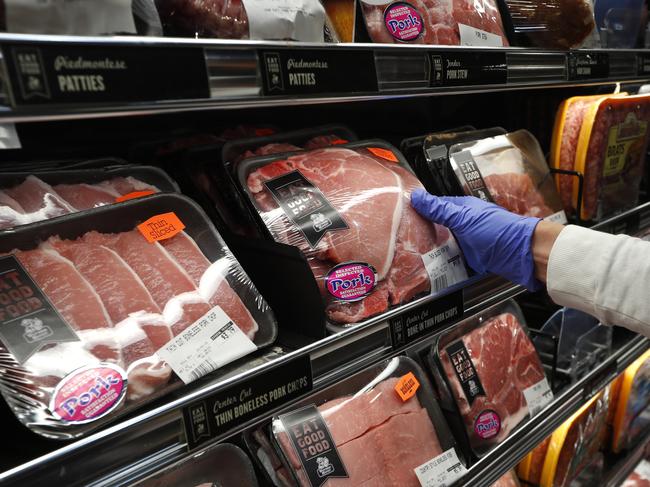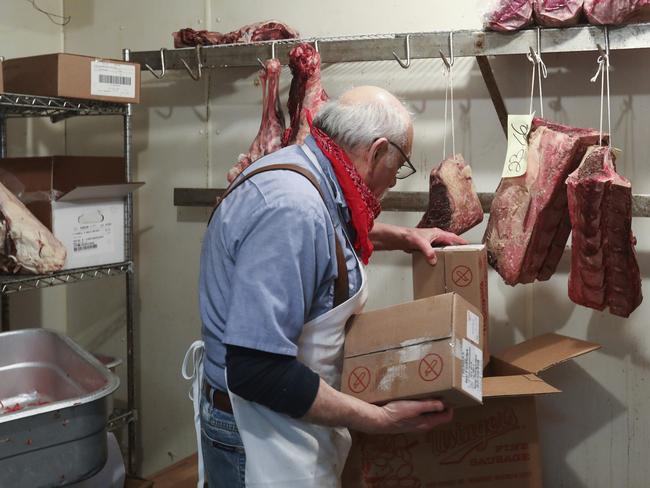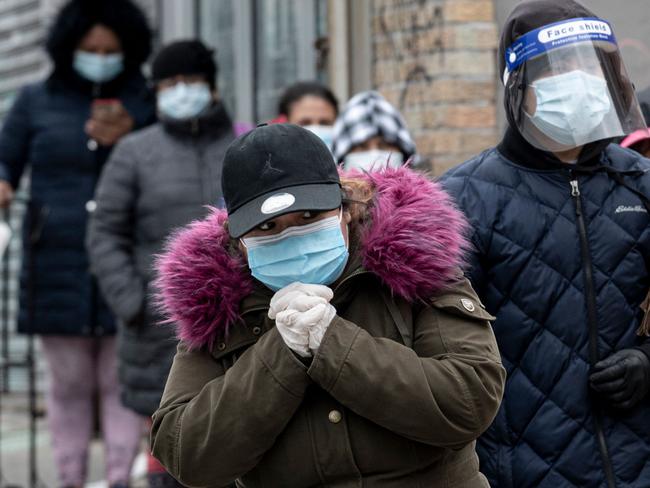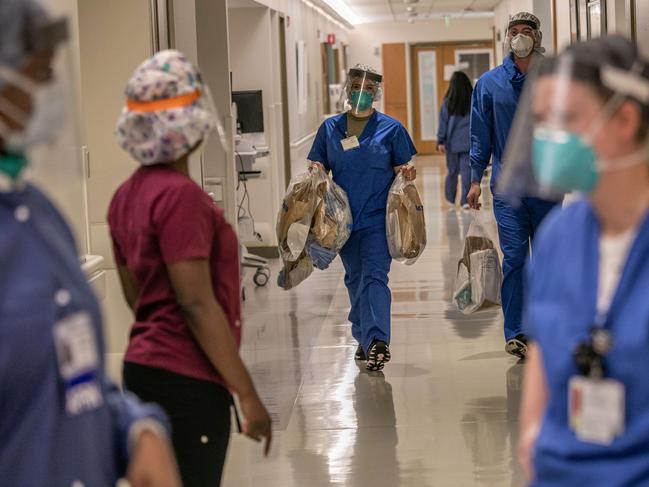Meat workers ordered back to work as virus plays havoc with food supply lines in US
The panic grocery shopping splurges in the US don’t look so silly now as signs emerge that some food supplies are dwindling.
News
Don't miss out on the headlines from News. Followed categories will be added to My News.
“Do you want fries with that?” is a question you routinely heard anywhere from a backwoods diner to an upscale bistro in New York.
But now that it’s being so rarely asked after the closure of thousands of restaurants, the fate of all those potatoes has come to symbolise the many contradictions of today’s America.
In Idaho, farmers are either tilling acres of spuds back into the ground, selling them below cost as cattle feed or giving them away to anyone who can drive by to pick them up.
Meanwhile, you’re lucky to find a potato or frozen chip in grocery stores and queues for food banks stretch miles-long from Arkansas to Minnesota.

This week President Donald Trump signed the Defence Production Act to re-open meat processing plants after at least 20 were shut down by coronavirus.
Workers are set to be sent back into their factories, their jobs designated essential, amid rising concerns that the country’s food supply chains are threatened.
Understandably, a good number of them don’t want to crowd back into process-working lines, leaving unions, lawyers and big food readying for a showdown.

The closures of at least 20 large meat and poultry processing plants due to the coronavirus have also turned the beef market upside-down, with prime cuts such as filet mignon and tenderloins that would usually grace top steakhouse menus down 40 per cent. Our last remaining local Chinese takeaway place can’t source beef or lamb, offering chicken and shrimp instead.

Mince, burgers and sausages are all getting hard to find in shops and climbing in price.
“Tenderloin prices are at 10-year lows as they are not typically purchased at retail,” said a researcher at commodity firm Urner Barry.
“Others include outside skirts and briskets. Most people can’t or don’t have tools to cook these beef items, so discounts have become the norm.”
More than 30 million Americans have lost their jobs in the past two months and the outlook is decidedly gloomy for now.

But because this is America, one of the biggest contributors to the historic first quarter contraction of 4.8 per cent was a decline in consumer health spending.
Only here would an unprecedented health catastrophe spark the closure of hospitals and clinics, putting 42,000 medical workers out of work in March.
Amid the biggest health care crisis in generations, doctors, nurses, paramedics and pharmacists are losing jobs for the first time in six years.
And yet, just as crazy, Wall Street just returned $A4.3 trillion to investors in April – its biggest gains in 33 years. It seems Gordon Gecko is alive and well in the age of COVID.

Originally published as Meat workers ordered back to work as virus plays havoc with food supply lines in US
